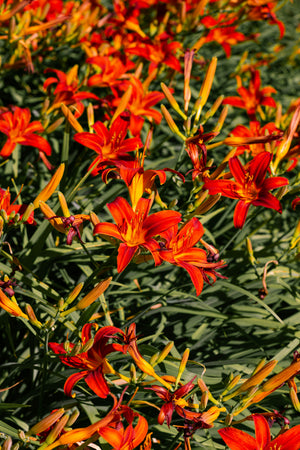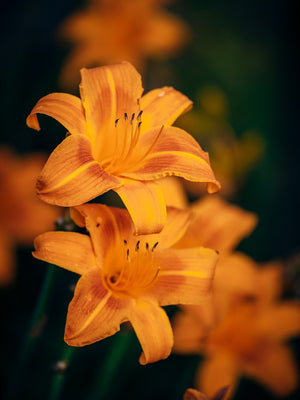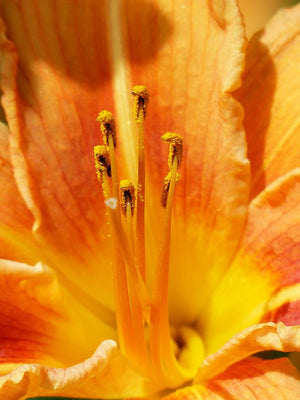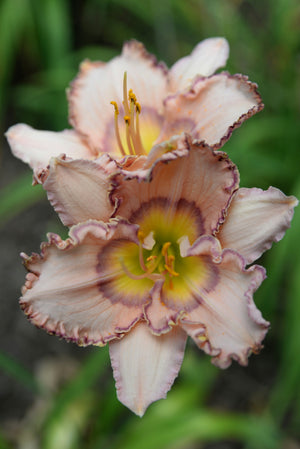The Hemerocallis Guide
Hemerocallis, commonly known as daylilies, bring a touch of timeless elegance and vibrant color to any garden landscape. Known for their trumpet-shaped blooms and robust growth, Hemerocallis plants are perfect for adding texture, color, and resilience to borders, garden beds, and containers. These plants are admired for their ability to thrive in various conditions and their relatively easy care. Whether you're aiming to enhance your garden's visual appeal, create a lively display, or add a unique element to your space, Hemerocallis offers a captivating and versatile solution. Explore our Hemerocallis Guide to learn more about cultivating and caring for these delightful plants, and discover how to incorporate them into your garden for lasting beauty and enjoyment.

About Hemerocallis
Hemerocallis is a genus of flowering plants in the Asphodelaceae family, comprising about 15 species. These plants are native to Asia, including China, Korea, and Japan. The name "Hemerocallis" is derived from the Greek words "hemera" (day) and "kallos" (beauty), referring to the short-lived nature of the flowers, which typically last for only one day.
Hemerocallis plants are known for their vibrant, trumpet-shaped flowers that come in a wide range of colors, including yellow, orange, red, pink, purple, and bi-colored varieties. The flowers are borne on tall, arching stems above clumps of grass-like foliage. Each flower typically lasts for one day, but each stem can produce multiple blooms, providing a continuous display of color throughout the growing season. Hemerocallis plants are hardy perennials, and they can thrive in a variety of soil and climate conditions.
Some popular species and varieties of Hemerocallis include Hemerocallis fulva (Tawny Daylily), known for its orange flowers and vigorous growth, Hemerocallis 'Stella de Oro', prized for its compact size and long blooming period, and Hemerocallis 'Ruby Spider', with its large, red blooms and striking yellow centers. Each species and variety has its unique characteristics, but all share the common traits of vibrant flowers and easy care.

Planting Hemerocallis
Hemerocallis plants require specific planting conditions to ensure their successful establishment and flourishing growth. Here are some essential guidelines for planting and caring for Hemerocallis:
Soil: Hemerocallis prefers well-draining soil that is rich in organic matter. A loamy or sandy soil works best. Ensure the planting site is free from heavy clay or waterlogged conditions, which can cause root rot. Adding compost or well-rotted manure can improve soil fertility and drainage.
Light: Hemerocallis thrives in full sun to partial shade. Choose a location with at least six hours of direct sunlight per day for optimal blooming. In hotter climates, some afternoon shade can help protect the plants from intense heat.
Watering: Hemerocallis is relatively drought-tolerant once established but requires regular watering during the initial growth period. Water the plants deeply, allowing the top inch of soil to dry out between waterings. During hot, dry periods, increase the frequency of watering to maintain soil moisture.
Planting Depth: Plant Hemerocallis with the crown (where the roots and stems meet) about 1 inch below the soil surface. Space the plants 18-24 inches apart to allow for proper air circulation and growth. When planting in the ground, dig a hole twice as wide and the same depth as the root ball to encourage root spread.
Mulching: Apply a layer of organic mulch, such as compost or shredded leaves, around the base of the plants to retain moisture, suppress weeds, and regulate soil temperature. Avoid covering the crowns directly, as this can lead to rot.

Care for Hemerocallis
Hemerocallis plants require specific care to ensure their optimal growth and health. Here are some general guidelines for the care of Hemerocallis:
Watering: Keep the soil consistently moist during the growing season but avoid waterlogging. Water the plants deeply, allowing the top inch of soil to dry out between waterings. During hot, dry periods, increase the frequency of watering to maintain soil moisture. Once established, Hemerocallis is quite drought-tolerant.
Fertilizing: Hemerocallis benefits from a balanced, slow-release fertilizer applied in the spring as the plants begin to grow. Follow the recommended dosage on the product label. Over-fertilizing can lead to excessive foliage growth at the expense of flowers.
Pruning: Remove spent flowers to encourage continuous blooming and trim back any damaged or dead foliage as needed. At the end of the growing season, cut back the foliage to the ground to prepare for winter. Pruning is best done in late fall or early spring.
Pests and Diseases: Hemerocallis is relatively pest-resistant but can be susceptible to issues such as aphids, spider mites, and daylily rust. Inspect your plants regularly and treat any infestations promptly with appropriate organic or chemical controls. Maintain proper spacing and air circulation to reduce the risk of diseases.
Winter Care: In colder climates, Hemerocallis plants are hardy and can withstand winter temperatures. Apply a layer of mulch around the base of the plants to insulate the roots and protect them from freeze-thaw cycles. Remove the mulch in early spring to allow new growth to emerge.

How To Use Hemerocallis
Hemerocallis offers versatility and can be utilized in various ways to enhance your garden and outdoor spaces. Here are some recommendations based on their characteristics:
Borders and Beds: Hemerocallis’s vibrant flowers and arching foliage make them perfect for adding texture and color to garden borders and flower beds. Plant them in clusters or drifts for a dramatic display of color and form.
Containers: Hemerocallis can be grown in containers, making them a versatile choice for patios, balconies, or small gardens. Choose a large container with good drainage and place it in a sunny spot to enjoy the plants up close.
Mass Plantings: In larger landscapes, Hemerocallis can be used in mass plantings to create a stunning visual impact. Their tall stems and bright flowers can fill large spaces with color and texture.
Mixed Plantings: Combine Hemerocallis with other sun-loving perennials, such as echinacea, rudbeckia, and salvia, to create a lush, colorful garden. Their bold flowers and arching foliage will complement other plants beautifully.
Erosion Control: Hemerocallis’s dense root system makes them an excellent choice for erosion control on slopes and banks. Plant them in mass to stabilize the soil and prevent erosion.
Conclusion
Hemerocallis is a captivating and versatile addition to any garden or outdoor space. With their vibrant flowers, arching foliage, and relatively easy care, Hemerocallis plants bring a touch of cheerful brightness and resilience to your environment. Their adaptability to various growing conditions and ease of care make them a favorite among gardeners of all levels. By following proper planting and maintenance techniques, you can fully harness the potential of Hemerocallis to enhance your garden, creating a lasting impact.
Whether you seek to create stunning flower displays, add visual interest to borders and beds, or enjoy their beauty in containers, Hemerocallis can fulfill a variety of roles in your landscape design. Place them individually to highlight their unique blooms and foliage, or combine different species and varieties for a dynamic and visually appealing display. Hemerocallis’s resilience and adaptability also make them ideal for mass plantings and erosion control.
Beyond their ornamental value, Hemerocallis plants contribute to the overall beauty and charm of your garden ecosystem. With their enduring beauty, versatility, and ecological significance, Hemerocallis plants bring delight and natural allure to your outdoor environment, enriching your gardening experience and enhancing the overall beauty of your landscape.


